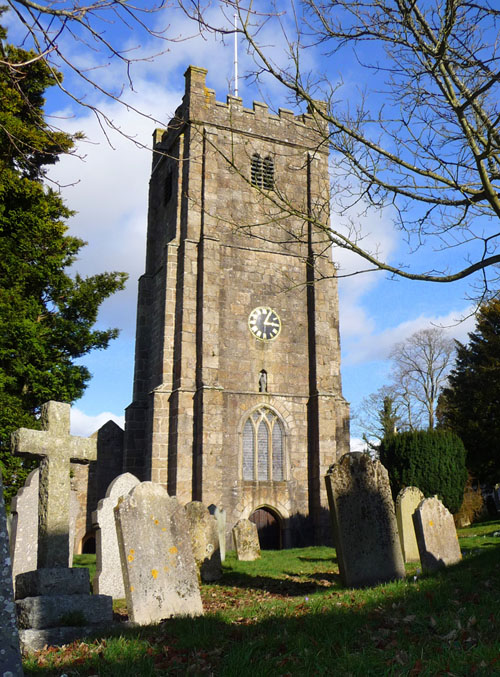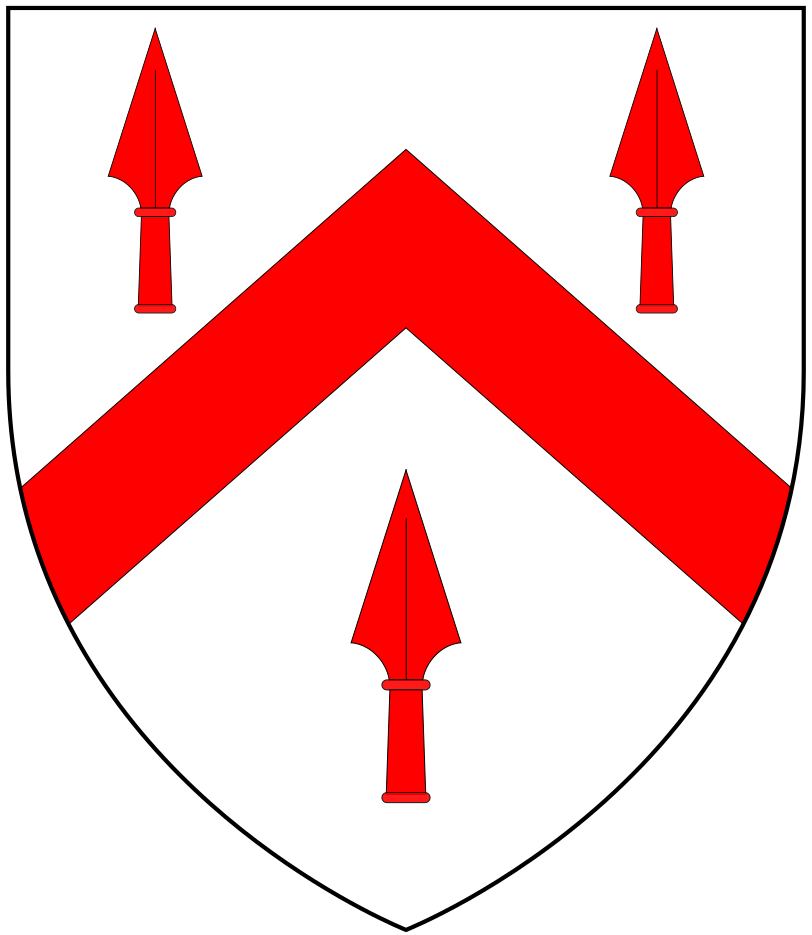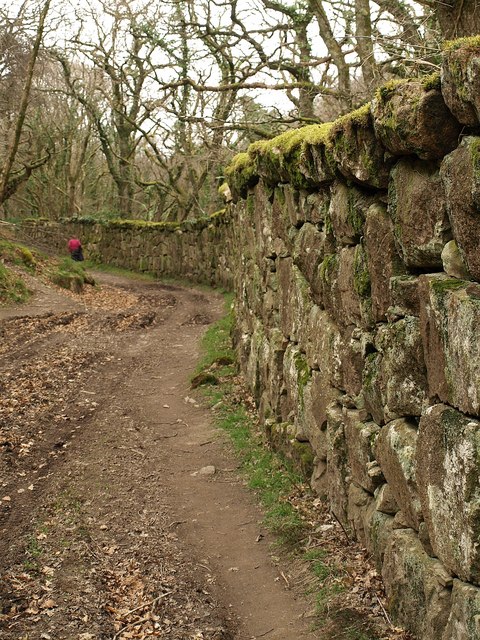|
Chagford
Chagford is a market town and civil parish on the north-east edge of Dartmoor, in Devon, England, close to the River Teign and the A382, 4 miles (6 km) west of Moretonhampstead. The name is derived from ''chag'', meaning gorse or broom, and the ''ford'' suffix indicates its importance as a crossing place. At the 2011 Census, it had a population of 1,449. History Archaeological remains confirm that a community has existed here for at least 4000 years. In historical times, Chagford grew due to the wool trade and from tin mining in the area. A weekly market was held here from before 1220, and a monthly livestock market in the town survived until the 1980s. In 1305 it was made a stannary town where tin was traded. Among the most prominent tin-mining families in the 16th century were the Endecotts, Knapmans, Whiddons and Lethbridges. In an English Civil War skirmish Sidney Godolphin, the poet and Royalist MP for Helston, was shot and killed in the porch of the Three Crowns. In ... [...More Info...] [...Related Items...] OR: [Wikipedia] [Google] [Baidu] |
John Whiddon
Sir John Whiddon (died 27 January 1576) of Whiddon in the parish of Chagford in Devon, was a Justice of the Queen's Bench from 4 October 1553 to his death on 27 January 1576, during the reigns of Queen Mary I and Queen Elizabeth I. Personal life He was the son of John Whiddon of Chagford by his wife who was a member of the Rugg family of Chagford. His ancestors were resident in the parish of Chagford for at least six generations prior to the judge. Whiddon married twice. His first wife was Ann Hollis, daughter of Sir William Hollis, by whom he had a daughter, Joane, who married John Ashley of London. His second marriage was to Elizabeth Shilston, a daughter and co-heiress of William Shilston. Among their eleven children were William, his eldest son and heir apparent, who predeceased his father without children, having married Eleanor Basset, a daughter of John Basset (1518–1541), and Francis (died 1606), fourth son, whose granddaughter was the legendary Mary Whiddon. Their ... [...More Info...] [...Related Items...] OR: [Wikipedia] [Google] [Baidu] |
Dartmoor
Dartmoor is an upland area in southern Devon, England. The moorland and surrounding land has been protected by National Park status since 1951. Dartmoor National Park covers . The granite which forms the uplands dates from the Carboniferous Period of geological history. The landscape consists of moorland capped with many exposed granite hilltops known as tors, providing habitats for Dartmoor wildlife. The highest point is High Willhays, above sea level. The entire area is rich in antiquities and archaeology. Dartmoor National Park is managed by the Dartmoor National Park Authority, whose 22 members are drawn from Devon County Council, local district councils and Government. Parts of Dartmoor have been used as military firing ranges for over 200 years. The public is granted extensive land access rights on Dartmoor (including restricted access to the firing ranges) and it is a popular tourist destination. Physical geography Geology Dartmoor includes the largest area of ... [...More Info...] [...Related Items...] OR: [Wikipedia] [Google] [Baidu] |
Whiddon, Chagford
Whiddon is an historic estate in the parish of Chagford in Devon, England. The manor house, now known as Whiddon Park House, survives as a remnant of the larger 16th-century mansion house of the Whiddon family.Cherry & Pevsner, p. 251. The house displays the date 1649 inscribed above the inner doorway. The manor house is now the property of the National Trust and is let for a nominal rent, but on a full repairing and insuring lease expiring on 17 January 2079. The deer park, which is bounded by a wall built of massive granite blocks at the entrance to the Teign Gorge, was built by Sir John Whiddon (died 1576), a Justice of the King's Bench. His monument survives in St Michael's Church, Chagford.Cherry & Pevsner, p. 250. References ;Sources * Cherry, Bridget & Pevsner, Nikolaus Sir Nikolaus Bernhard Leon Pevsner (30 January 1902 – 18 August 1983) was a German-British art historian and architectural historian best known for his monumental 46-volume series of ... [...More Info...] [...Related Items...] OR: [Wikipedia] [Google] [Baidu] |
Sidney Godolphin (poet)
Sidney Godolphin, 14 January 1610 (baptised) to 8 February 1643, was a minor poet and courtier from Cornwall who sat in the House of Commons between 1628 and 1643. He served in the Royalist army during the First English Civil War and was killed in a skirmish near Chagford in Devon on 8 February 1643. Personal details Godolphin was baptised on 14 January 1610, second son of Sir William Godolphin (1567-1613) of Godolphin Estate, near Breage, Cornwall, and his wife, Thomasine (1581-1612). He had two brothers, Francis (1605-1667) and William (1611-1636), as well as a sister, Penelope (1607-1669), who married Charles Berkeley, 2nd Viscount Fitzhardinge. He never married and left no children. Career Orphaned by the time he was three, Godolphin inherited his mother's estates in Norfolk and had enough money to live independently. He attended Exeter College, Oxford, from 1624 to 1627, followed by a period acquiring the basic legal training then considered essential for members of the g ... [...More Info...] [...Related Items...] OR: [Wikipedia] [Google] [Baidu] |
Moretonhampstead
Moretonhampstead (anciently ''Moreton Hampstead'') is a market town, parish and ancient manor in Devon, situated on the north-eastern edge of Dartmoor, within the Dartmoor National Park. The parish now includes the hamlet of Doccombe (), and it is surrounded clockwise from the north by the parishes of Drewsteignton, Dunsford, Bridford, Bovey Tracey, Lustleigh, North Bovey and Chagford. At the 2011 census the population of the parish was 1,703, and Moorland electoral ward, in which Moretonhampstead lies, had a population of 2,806. The parish church is dedicated to St. Andrew. Along with a few other places in Devon, it is one of the longest place names in England with 16 letters. Moretonhampstead is twinned with Betton in France. Etymology The Domesday Book of 1086 records the manor as ''MORTONE''. This part of the name derives from the Old English for a farmstead in moorland, referring to the town's situation on the edge of Dartmoor. By 1493 "Hampstead" had been added to the ... [...More Info...] [...Related Items...] OR: [Wikipedia] [Google] [Baidu] |
West Devon
West Devon is a local government district and borough in Devon, England. Towns and villages in the district include Chagford, Okehampton, Princetown and Tavistock, where the council is based. The district was formed on 1 April 1974, under the Local Government Act 1972, as a merger of the previous municipal borough of Okehampton, Okehampton Rural District, and Tavistock Rural District. West Devon contains most of Dartmoor. Politics Elections to the borough council are held every four years with 31 councillors representing 22 wards. In 2013, the Local Government Boundary Commission for England initiated a review of West Devon with the aim of delivering electoral equality amongst voters at local elections, with each councillor representing a similar number of voters and with ward boundaries reflecting the interests and identities of local communities. After a consultation period, the commission recommended that West Devon should continue to be represented by 31 councillors ... [...More Info...] [...Related Items...] OR: [Wikipedia] [Google] [Baidu] |
Stannary
A stannary was an administrative division established under stannary law in the English counties of Cornwall and Devon to manage the collection of tin coinage, which was the duty payable on the metal tin smelted from the ore cassiterite mined in the region. In Cornwall, the duty was passed to the Duchy of Cornwall; in Devon to the Crown. With the abolition of tin coinage in 1838 (following extensive petitioning by the Cornish tin industry for simplification of the taxation rules), the principal purpose of the stannaries ceased. In Cornwall, however, they retained certain historic rights to appoint stannators to the Cornish Stannary Parliament. Etymology The word ‘stannary’ is derived from the Middle English ''stannarie'', through Medieval Latin ''stannaria'' (‘tin mine’), ultimately from Late Latin ''stannum'' (‘tin’) (cf. the symbol for the chemical element Sn). The native Cornish word is ''sten'' and tin-workings ''stenegi''. In Cornwall There were four Cornish ... [...More Info...] [...Related Items...] OR: [Wikipedia] [Google] [Baidu] |
Dartmoor Tin-mining
The tin mining industry on Dartmoor, Devon, England, is thought to have originated in pre-Roman times, and continued right through to the 20th century, when the last commercially worked mine (Golden Dagger Mine) closed in November 1930 (though it saw work during the Second World War). From the 12th century onwards tin mining was regulated by a stannary parliament which had its own laws. Tin is smelted from cassiterite, a mineral found in hydrothermal veins in granite, and the uplands of Dartmoor were a particularly productive area. The techniques used for the extraction of tin from Dartmoor followed a progression from streaming through open cast mining to underground mining. Today, there are extensive archaeological remains of these three phases of the industry, as well as of the several stages of processing that were necessary to convert the ore to tin metal. Stannary law Mining became such an important part of life in the region that as early as the 12th century, tin miners ... [...More Info...] [...Related Items...] OR: [Wikipedia] [Google] [Baidu] |
Bretteville-sur-Laize
Bretteville-sur-Laize () is a commune in the Calvados department in the Normandy region in northwestern France. The scene of heavy fighting following the Normandy landings, much of the town is of post-World War II construction. Population International relations Bretteville-sur-Laize is twinned with: * Maßbach, Germany (since 1989) * Chagford, England (since 1975, but twinning activity lapsed in the 1990s) See also * Communes of the Calvados department * Bretteville-sur-Laize Canadian War Cemetery * Château des Riffets The Château des Riffets is a château in the village of Bretteville-sur-Laize, Calvados department, Normandy, northwestern France. History The château was built around 1880; the nearby farm dates from the 18th century. It was built on the ruins ... References Communes of Calvados (department) Calvados communes articles needing translation from French Wikipedia {{Calvados-geo-stub ... [...More Info...] [...Related Items...] OR: [Wikipedia] [Google] [Baidu] |
List Of Towns In England
This is a list of towns in England. Historically, towns were any settlement with a charter, including market towns and ancient boroughs. The process of incorporation was reformed in 1835 and many more places received borough charters, whilst others were lost. All existing boroughs were abolished on 1 April 1974 and Borough status in the United Kingdom, borough status was reformed as a civic honour for local government districts. At the same time a limited number of former boroughs and other settlements became successor parishes, with the right to be known as a town and preserve their charter. Boroughs that did not become successor parishes formed unparished areas, but were able to preserve their charters without a corporate body by appointing charter trustees. Since 1 April 1974 any parish council in England has the right to resolve to call itself a town council and many communities have taken up this right, including areas that preserved continuity with charter trustees. However, ... [...More Info...] [...Related Items...] OR: [Wikipedia] [Google] [Baidu] |
River Teign
The River Teign is a river in the county of Devon, England. It is long and rises on Dartmoor, becomes an estuary just below Newton Abbot and reaches the English Channel at Teignmouth. Toponymy The river-name 'Teign' is first attested in an Anglo-Saxon charter of 739, where it appears as ''Teng''. The name is pre-Roman, related to the Welsh ''taen'' meaning 'sprinkling', and means simply 'stream'.Eilert Ekwall, ''The Concise Oxford Dictionary of English Place-names'', p.462. The river lends its name to several places, including Teigncombe, Drewsteignton, Canonteign, Teigngrace, Kingsteignton (at one time, one of England's largest villages), Bishopsteignton, Teignharvey, and the second largest settlement along its course, Teignmouth. However, the villages of Combeinteignhead and Stokeinteignhead, on the other side of the estuary from Bishopsteignton, are not named after the river. Course The River Teign rises on Dartmoor, as do many other major Devonian rivers. It has two sep ... [...More Info...] [...Related Items...] OR: [Wikipedia] [Google] [Baidu] |
Central Devon (UK Parliament Constituency)
Central Devon is a constituency represented in the House of Commons of the UK Parliament since 2010 by Mel Stride, a Conservative. History The constituency was created for the 2010 general election, following a review of parliamentary representation in Devon by the Boundary Commission for England, which increased seats in the county from 11 to 12. Central Devon covers parts of the East Devon, Mid Devon, Teignbridge and West Devon districts. The wards from the last election presented a notional Conservative majority of just over 1,700, making it a marginal seat at the first election. Despite this, Mel Stride's majority was 17.1 percentage points and an absolute majority. UK Polling report, Retrieved 29 May 2010 Boundaries The constituency contains |






